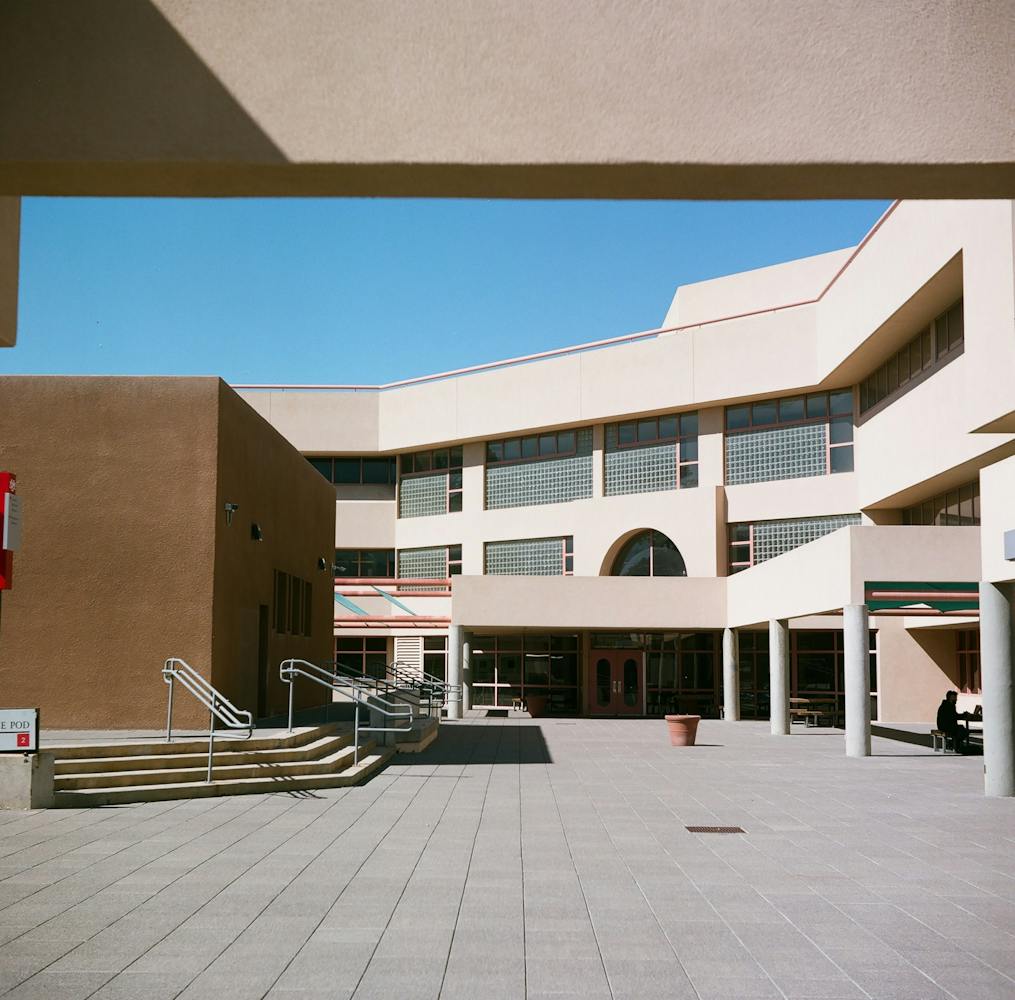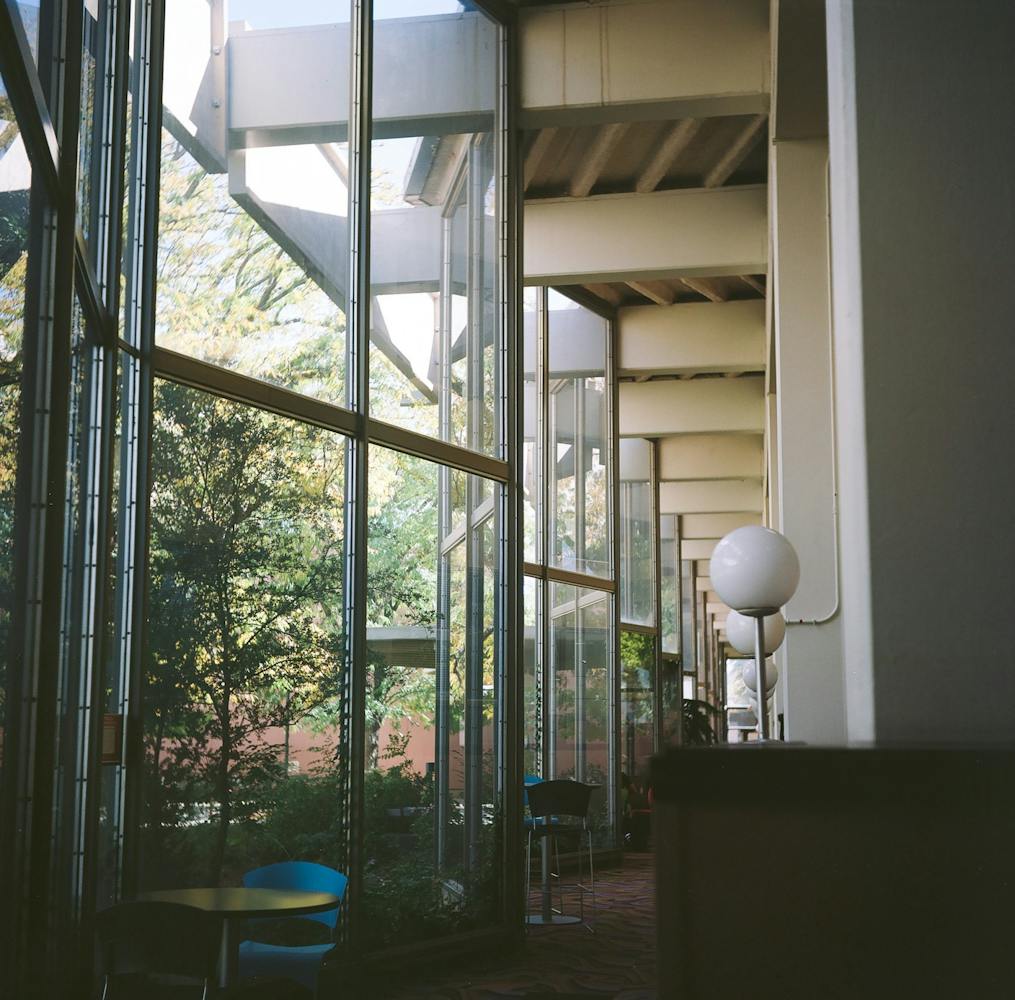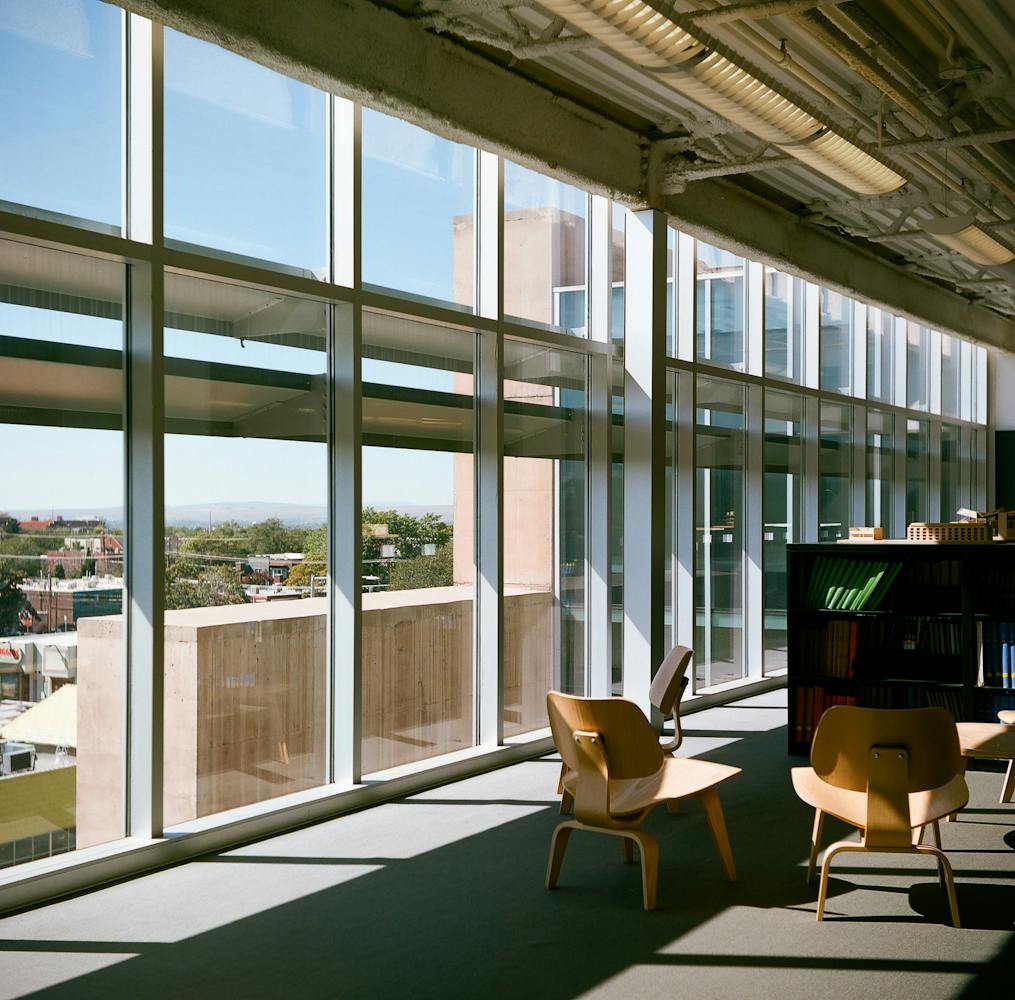Picture yourself in a classroom: four rectangular, cream-colored walls, each about 30 feet from each other. At the front of the classroom is a chalkboard: directly to the right, a small window. In front of the chalkboard is the professor’s desk, adorned with computer and projector controls; rows of desks fill the rest of the space. The bare walls direct your eyes toward the window and your mind toward what’s outside of it.
Right now, though, the sunshine beaming down and refracting through the window casts an undiscovered beauty atop the entire scene; suddenly, the cream-colored walls become canvases, their corners and intersections transforming to reveal a hidden sculpture. You pause and ask yourself: is this mundane, everyday classroom art?
For Katya Crawford, professor and chair of the department of landscape architecture at the University of New Mexico, architecture is more than just the creation of buildings; like art, it can serve as a cultural time stamp.
“I think that architecture definitely involves buildings, but not all buildings are architecture. So, I think that's where the art comes in: architecture represents or pushes against the paradigms of our time. And I think that there is, with architecture, a love of creating beautiful, livable spaces,” Crawford said.
Nora Wendl, an associate professor of architecture whose research focuses on interpretations of architecture within varying artistic works, cited architecture’s ability to refer to “a particular moment and culture” as one of the reasons people get excited about it.
In her research, Wendl often looks for a response created by a building within an artist’s work, or more broadly, a response created in any inhabitant of said building.
“I think buildings are often provoking us to slow down and pay attention to ourselves. Buildings are bodies, right, so when we go into a building, we can feel it sort of immediately: whether it's a building that's really inviting us in, whether it's a building where the user, the inhabitant’s experience, was not considered at all,” Wendl said.
Crawford identified a key difference for her between architecture and art in our occupation of a building or space.
“(Art) doesn't have to consider, necessarily, a client, and it doesn't have to consider the safety of a client or people … There's much less of a social kind of responsibility in terms of physical safety with art as opposed to architecture and landscape architecture because we occupy these spaces. There's some art that you can occupy, certainly, but in terms of defining a profession, buildings are meant to be occupied,” Crawford said.
For Wendl, the difference between art and architecture comes down to the considerations made when constructing a building and whether the building or space has the ability to care for the people inhabiting it.
“If a building is not meant to care for or uplift or hold people in a certain way, whether it's institutional or domestic, if it's not meant to really care for people, then I don't think it can be art. I think that's the difference,” Wendl said.
Both Wendl and Crawford cited George Pearl Hall as an example of architecture as art on UNM's main campus: for Wendl, it’s the inviting and inspiring feeling the hall provokes for her, for Crawford, the concepts executed and realized through the space.
Get content from The Daily Lobo delivered to your inbox
“It can almost be read as a cliff dwelling, where you've got these two massive forms on either side ... From anywhere in the building you can look outside and there's deliberate sort of relationships to inside and outside — the idea of transparency. You can look completely through the studio spaces to the garage in the back. So transparency, solid void, the idea of cliff dwellings — they're all very strong concepts that are realized through creating spaces,” Crawford said.
Looking forward, Crawford believes landscape architecture is more important now than ever due to its relationship between the climate, environment and the space it creates. Moreover, UNM represents not only a great example of landscape architecture, but also showcases an architectural timeline that goes back to architecture as representing “the paradigms of our time.”
“The campus itself is a good representation of landscape architecture: everything on campus has been designed — some of it better than others, some buildings in some spaces better than other buildings and spaces — but it really is a timeline of not just the University, but of technology, of knowledge, of styles, of methods, of designing interior exterior spaces,” Crawford said.
John Scott is the editor-in-chief at the Daily Lobo. He can be contacted at editorinchief@dailylobo.com or on Twitter @JScott050901









